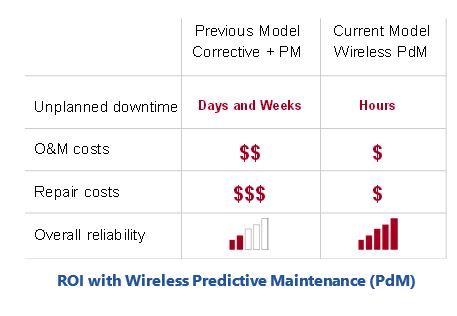

Several improvements and innovations are driving the adoption of Industrial IoT (IIoT), helping create a solid value proposition for end users. Various industries are now adopting advanced IIoT technologies to bring improvement in a range of different areas. One such area is asset tracking.
Bar codes and RFID are basic and still-popular asset tracking technologies. But they have limitations relating to range and lack of real-time tracking visibility. GPS tracking, which has achieved economies of scale via consumer and smartphone applications, is helping overcome these limitations. In conjunction with all the innovations we’ve been seeing in sensors, networking, and cloud computing, GPS technology is helping provide a cost-effective solution for real-time tracking of vehicles and other assets for commercial and industrial applications.
Vehicles and other assets can be tracked globally using hardware that combines GPS technology with cellular and satellite phone technology. The GPS tracking device is installed in a vehicle or other asset that needs to be tracked. This device then collects signals from multiple GPS satellites, calculates its GPS location, and transmits the GPS coordinates to a central station via a cellular or satellite network. These data are then made available to the user through software that offers details about the position, location, and usage of the vehicle or other asset. The software is made available through a variety of options such as web interface, mobile platforms, and/or integrated, with other asset management systems.
The transportation industry has been the largest user of GPS tracking solutions. Although long-haul fleet carriers represent one of the largest segments, there has been growth in tracking solutions to various other asset-intensive industries such as automotive, aerospace & defense, mining, and oil & gas. These industries are adopting asset-tracking technologies to track and monitor asset location and status to obtain visibility into their asset utilization. Industries are also realizing that they can leverage tracking technologies to better manage their assets and significantly improve asset performance.
Asset tracking technologies offer a range of benefits. Some key applications and related benefits include:
For industries, such as farming, mining or oil & gas, where organizations must maintain and service hundreds of equipment spread over many acres, even just finding an asset can be a challenge. With exact GPS coordinate information, maintenance personnel can easily locate an asset. GPS tracking technologies also help managers access real-time asset status information as well as historical location and status data. This helps them better understand how their operations are running and find areas where efficiency can be improved.
A geofence is a virtual barrier surrounding a real-world geography. With GPS tracking technology, users can set up a virtual boundary for their assets. Whenever an asset goes out of this boundary, an alert or notification is generated. Setting virtual boundaries via geofencing can be extremely helpful for asset managers. First, it ensures the asset is safe and helps with recovery after theft. Second, it ensures safety. Industries such as mining and oil & gas are inherently hazardous. These industries often have restricted areas, where extreme caution needs to be exercised. If a vehicle enters these areas, a manager gets an alert instantly and can respond quickly.
The location data collected with GPS trackers helps managers get better insight on various usage parameters, such as mileage and fuel consumption. Then, managers can easily evaluate inefficiencies in the transportation process. They may identify assets that are not energy-efficient, or are wasting fuel with excessive idle time or by not taking optimal routes. As discussed in the following case study, end users can also integrate their tracking data with their other asset management systems for added visibility and better planning.
At the 2018 ARC Industry Forum in Orlando, Florida, Katie Diesl, Director of Finance for Agriculture at Grimmway Farms gave an interesting presentation on how the company uses IIoT and asset tracking technologies to manage the mobile assets around its farms. Grimmway Farms, which produces a variety of fruits and vegetables, has over 100 maintenance technicians to help keep the assets performing safely, reliably, and optimally. To manage its assets and technicians, in 2008 Grimmway Farms implemented Infor EAM, which enabled it to identify some efficiency issues related to farming assets.
Due to inconsistent equipment utilization, time-based preventive maintenance for their farm assets would often result in over-maintenance. The company realized that to improve maintenance efficiency, the EAM system needed to know each asset’s use measured in terms of miles and hours. However, manually obtaining and managing this information was a cumbersome process.
A second issue related to the fleet being mobile, outdoors, and located somewhere within the over 40,000-acre farm, which often made its farming equipment difficult to find. In the past, the technicians would call field crews to determine asset location. Based on the manual logs each technician kept, they would try to locate equipment they believed might be close to needing service. Occasionally, they would arrive at the field location only to find that the vehicles had been moved and thus the vehicle would not be serviced.
To overcome the above challenges, Grimmway Farms deployed Trimble GPS tracker, TVG 660, on many 
The maintenance and operations groups now have more accurate visibility into actual equipment location and usage. They are better informed and thus better able to plan activities. Also, the technicians can now easily locate the assets.
Benefits include:
Recommendations
Based on ARC research and analysis, we recommend the following actions:
The Grimmway Farms case presentation is covered in detail in ARC’s Strategy Report, Maintenance Extends the Scope of Enterprise Asset Management, published in June 2018. ARC Advisory Group clients can view the complete report at ARC portal.
Readers can also see the video of Katie Diesl’s presentation here: https://www.youtube.com/watch?v=bLk_Zpi2G14&feature=youtu.be
If you would like to buy this report or obtain information about how to become a client, please Contact Us
Keywords: Global Positioning System (GPS), GPS Asset Tracking, Real-time Location Tracking, Industrial IoT (IIoT), ARC Advisory Group.

